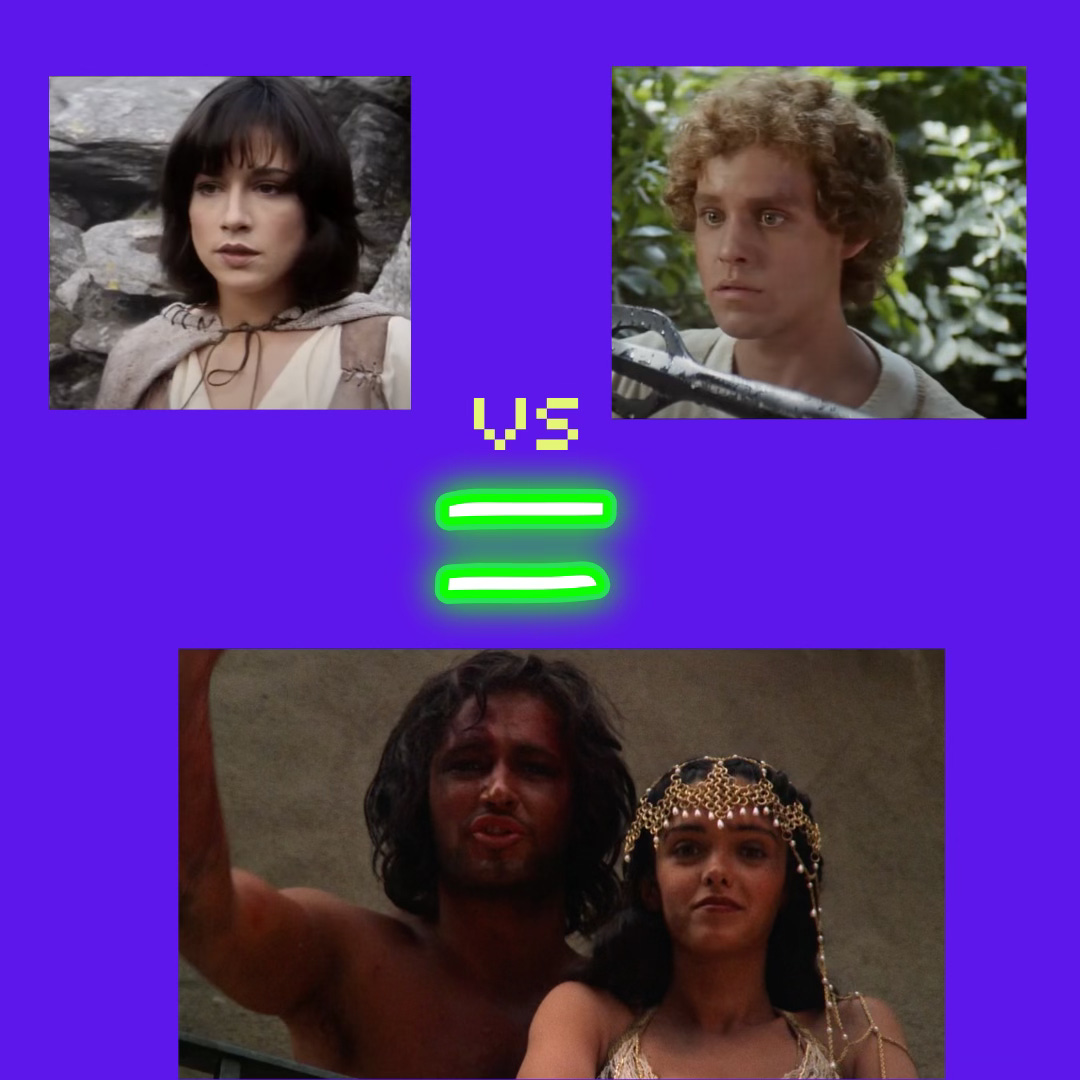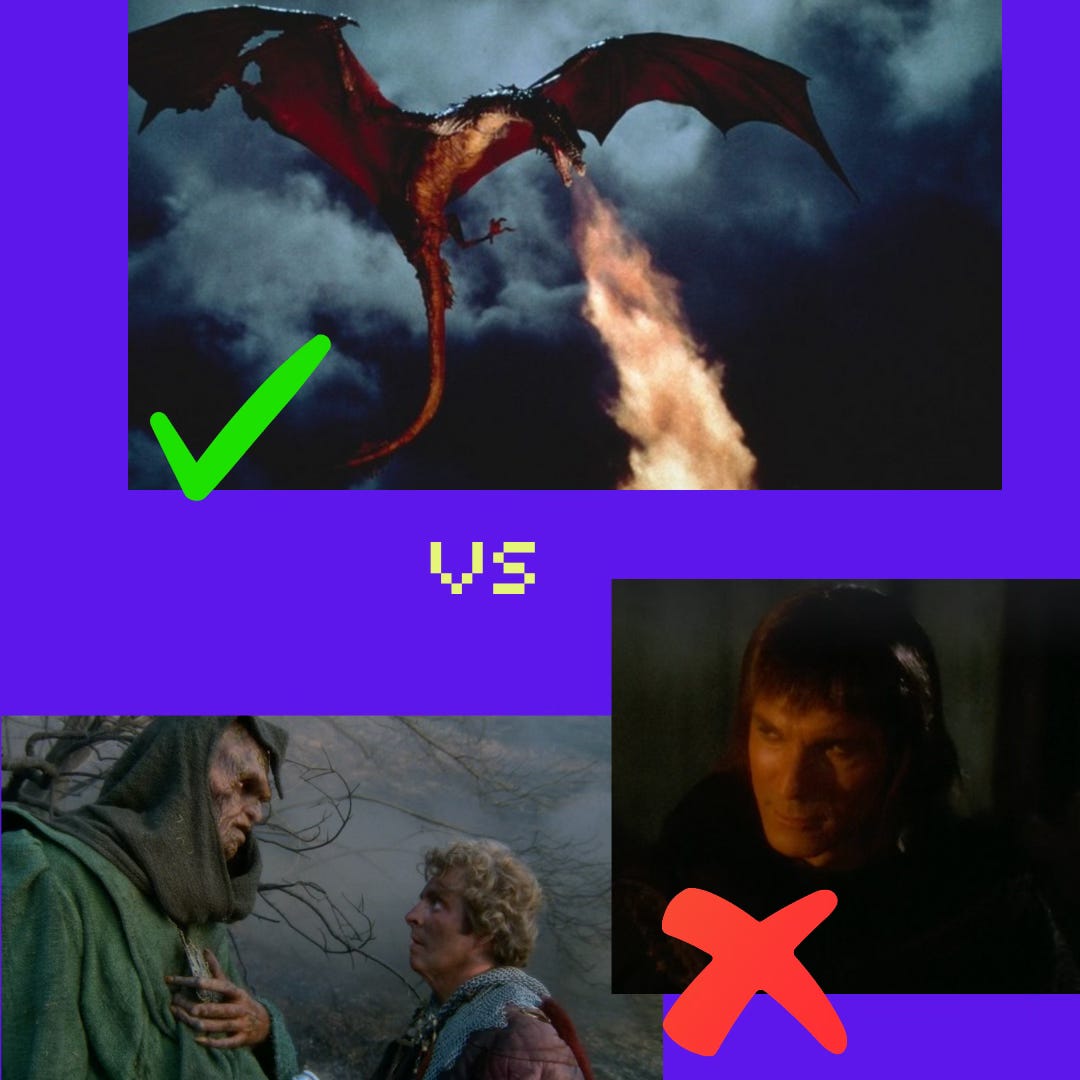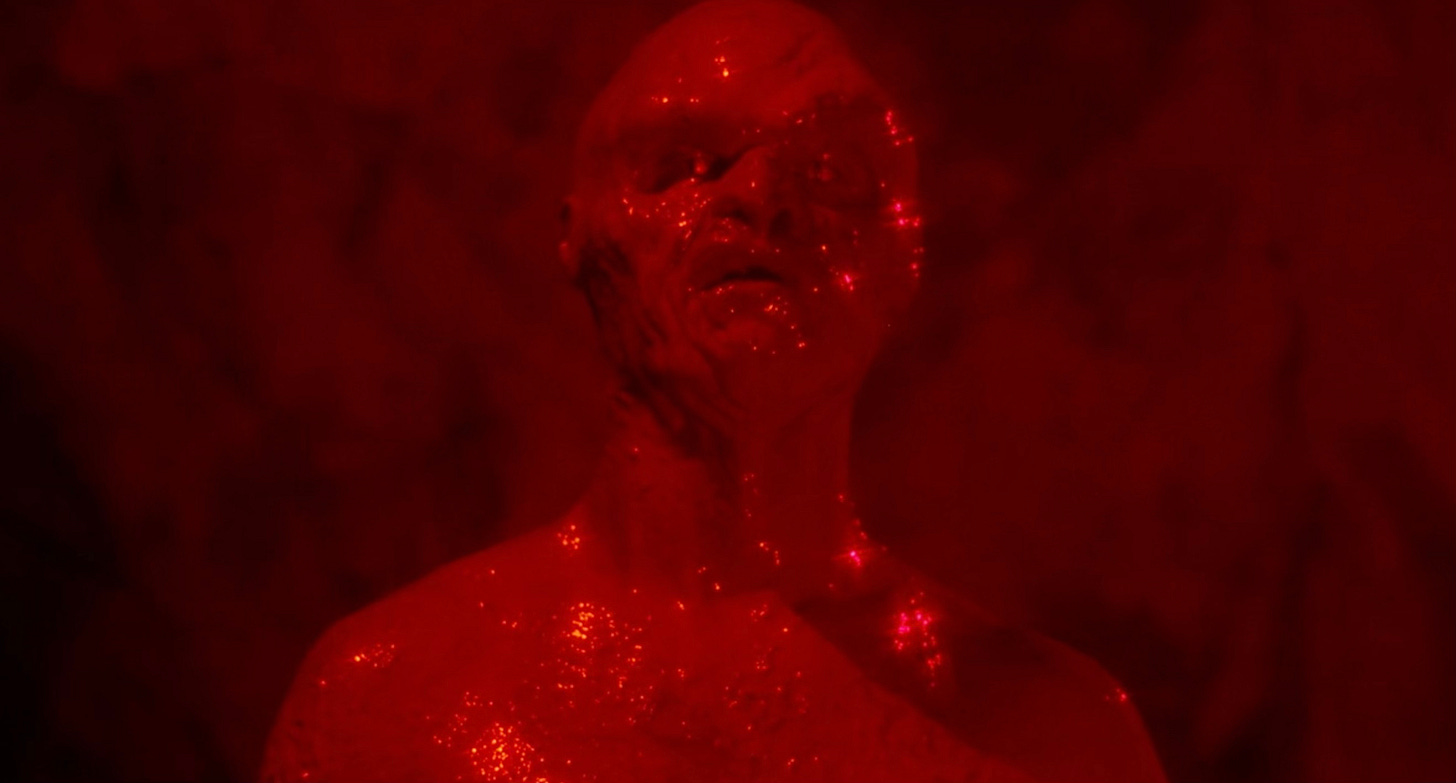1982 was boom times for sword & sorcery: no fewer than 5 such films were released that year, including John Milius’ Conan the Barbarian, which launched Arnold Schwarzenegger’s career (review coming). Albert Pyun’s The Sword and the Sorcerer bears many genre hallmarks we’ve already seen: avenging hero, gimmicky sword, distressed heroine, evil sorcerer, comic sidekicks (so many sidekicks). In his review, even Roger Ebert sort of threw up his hands before giving it half a star:
“Let’s see. So far in the last year, I’ve seen “Dragonslayer,” “Excalibur,” and a preview of “Conan the Barbarian.” Put them on a quadruple bill with “The Sword and the Sorcerer,” and you’d sometimes have trouble figuring out when one ended and the next began.”
Released on April 23, 1982, Sword was a surprise US box success, netting $39.1 million against its $4 million budget. For reference, Conan, which premiered in the US some weeks later on May 14, took $39.5 million at the US box office but cost around $20 million to make. Sword was director Albert Pyun’s first film, and his brainchild — he shopped around for investors for four years before securing funds for the project. He had serious directing chops, though, having trained with Takao Saito, Akira Kurosawa’s Director of Photography on Akahige (1965).1 Pyun went on to a prolific career, mainly in B-movies and straight-to-video, but Sword remained his most financially successful picture.
If you look at Pyun’s filmography, he was part of basically every 1980s-1990s trend: not just sword & sorcery but cyborgs; comic books; rap-star/ action-star buddy comedies; post-apocalyptic noir; he was even in talks to direct Total Recall (1990). In 2010, hyping the release of Tales of an Ancient Empire, a sequel to Sword starring Kevin Sorbo (and future First Lady of California Jennifer Siebel), he gave a series of refreshingly honest interviews that are well worth reading in full.2 All I’ll say here is that when an Independent Film Channel profile introduces a director as “the new Ed Wood,” you know you’re in for something special.3
Sword & Sorcery bracket: The Sword and the Sorcerer vs. Dragonslayer
What happens: Talon (Lee Horsley), the exiled son of an assassinated king, leads a happy-go-lucky life commanding a band of mercenaries. He gets entangled in a rebellion against the usurper Cromwell (Richard Lynch) led by Prince Mikah (Simon McCorkindale) and his sister Princess Alana (Kathleen Beller), whilst the titular sorcerer, Xusia of Delos (Richard Moll), mostly slouches around in the background.
Protagonist | TIE
While Dragonslayer’s Galen shows some signs of an actual character arc (vanishingly rare in these films), Sword’s Talon is implausible but way more fun, smirking and capering his way through interminable fight scenes. Sure, he’s psychologically convincing, but would Galen have had the range to go from knocking someone unconscious with a half eaten haunch of mutton in the film’s first half to getting crucified in the second? I don’t think so. (Pyun, in a 2009 interview: “Horsley was terrific. However, the wig gave him a scalp infection. There was too much blood and he hated being put on that cross. When I asked him to be in Tales of an Ancient Empire, he said, "Only if you don't crucify me again."”)
As heroines go, where Dragonslayer’s Valerian was supremely competent and made herself useful at every turn, Sword’s Alana basically just exists as a sexual object. She counters the genre standard rape-y situations in which she finds herself by appearing to acquiesce, followed by a knee in the unmentionables (she does this three times). It’s basically her catchphrase, which, okay? But surely they could have done better, especially because it never once works.
Antagonist | Winner: Dragonslayer
It’s going to be very difficult to unseat the dragon in this category, and the collection of villains in Sword are not up to the task. There’s the usurping king Cromwell, played by veteran villain Richard Lynch, who I could never quite believe was actually holding his own in sword fights with Talon. The triple-crossing Count Machelli (George Maharis) is so overtly slimy you wonder why anyone falls for it.
The only real competition is demonic sorcerer Xusia of Delos, played by a pre-Night Court Richard Moll, still recognizable under layers of prosthetic makeup and some pretty impressive special effects. But for an undead ancient sorcerer with apparently limitless eldritch power, he goes down easy, twice: stabbed once by Cromwell and thrown over a cliff (seems too easy?) and then again, inevitably, by Talon.
Other Extenuating/ Aggravating Circumstances | Winner: Dragonslayer
Overall, Sword was a competently made movie with some fun parts, but could not compete with Dragonslayer’s budget, ambition, and technical know-how. I’ve already mentioned that the fight scenes seem to go on forever, but the film in general feels uneven. Early in the movie there’s a very chatty narrator who totally disappears before the first third of the movie is over. There’s also an intriguing witch (Emily Yancy) who gets killed off 5 minutes after she’s introduced, which seems like a missed opportunity (it’s a spectacular death, at least).
I’ve spoken before about how too many sidekicks muddies the waters, and Talon accumulates supporters/ sidekicks/ hangers-on at such a rate that it’s impossible to keep track. He starts out with his band of mercenaries, but soon acquires a bunch of rebel farmers, a passel of friendly prostitutes, led unbeknownst to him by his sister, Elizabeth (Anna Bjorn); the fortuitously encountered castle architect, just in time to help them escape from the dungeon; King Charles of the Franks and King Sancho of Valencia (?!); and Barbadian professional wrestler and bodybuilder Earl Maynard, for some reason.
Finally, Talon’s crucifixion scene gave me major ick, not because of the crucifixion per se, but because of the squelchy noise as Talon tries to work his hands out of the nails (must have been a fun Foley assignment). It doesn’t seem to affect his ability to participate in the last 30 minutes of sword fight, however, so, no harm done?
And with that, Dragonslayer stays on top for another week.
I’ve decided to add a further important piece of information to the bracket. Going forward I will note when a Rifftrax exists for the films I review, because while I’m committed to watching all of them in their natural state there’s no need for you to suffer.
Is there a Rifftrax? Yes. (As of posting the Rifftrax is also streaming on Tubi).
And I will keep a running tally of all the sword & sorcery titles I’ve reviewed so far, with my ranking (once they leave the top spot I’m making an executive decision about where they go…):
Dragonslayer (1981)
The Sword and the Sorcerer (1982)
Hawk the Slayer (1980)
“Interview with Albert Pyun,” Cool Ass Cinema, October 25, 2009.
In addition to the IFC and Cool Ass Cinema interviews, see “Albert Pyun Interview, the man who brought us cyborgs,” Budomate Magazine, April 14, 2012 and Charlie Jane Anders, “Incredibly Strange and Ridiculously Cheap: Albert Pyun’s 30-Year Career in B-Movies,” i09, December 6, 2012.
Stephen Saito, “Albert Pyun’s ‘Tales’ Stand Tall,” Independent Film Channel, June 22, 2010.










Brilliant and hilarious review